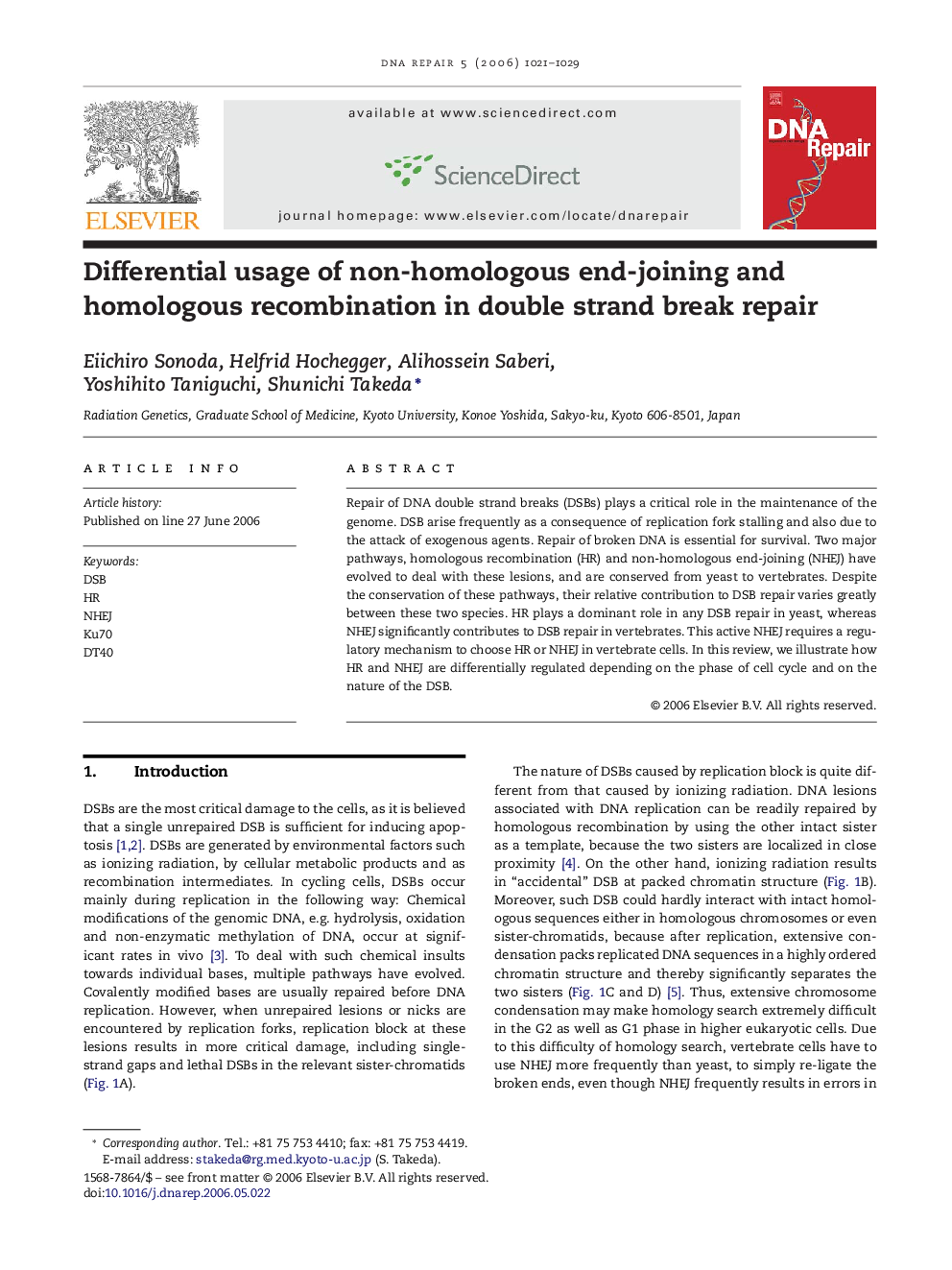| کد مقاله | کد نشریه | سال انتشار | مقاله انگلیسی | نسخه تمام متن |
|---|---|---|---|---|
| 1981087 | 1539417 | 2006 | 9 صفحه PDF | دانلود رایگان |

Repair of DNA double strand breaks (DSBs) plays a critical role in the maintenance of the genome. DSB arise frequently as a consequence of replication fork stalling and also due to the attack of exogenous agents. Repair of broken DNA is essential for survival. Two major pathways, homologous recombination (HR) and non-homologous end-joining (NHEJ) have evolved to deal with these lesions, and are conserved from yeast to vertebrates. Despite the conservation of these pathways, their relative contribution to DSB repair varies greatly between these two species. HR plays a dominant role in any DSB repair in yeast, whereas NHEJ significantly contributes to DSB repair in vertebrates. This active NHEJ requires a regulatory mechanism to choose HR or NHEJ in vertebrate cells. In this review, we illustrate how HR and NHEJ are differentially regulated depending on the phase of cell cycle and on the nature of the DSB.
Journal: DNA Repair - Volume 5, Issues 9–10, 8 September 2006, Pages 1021–1029